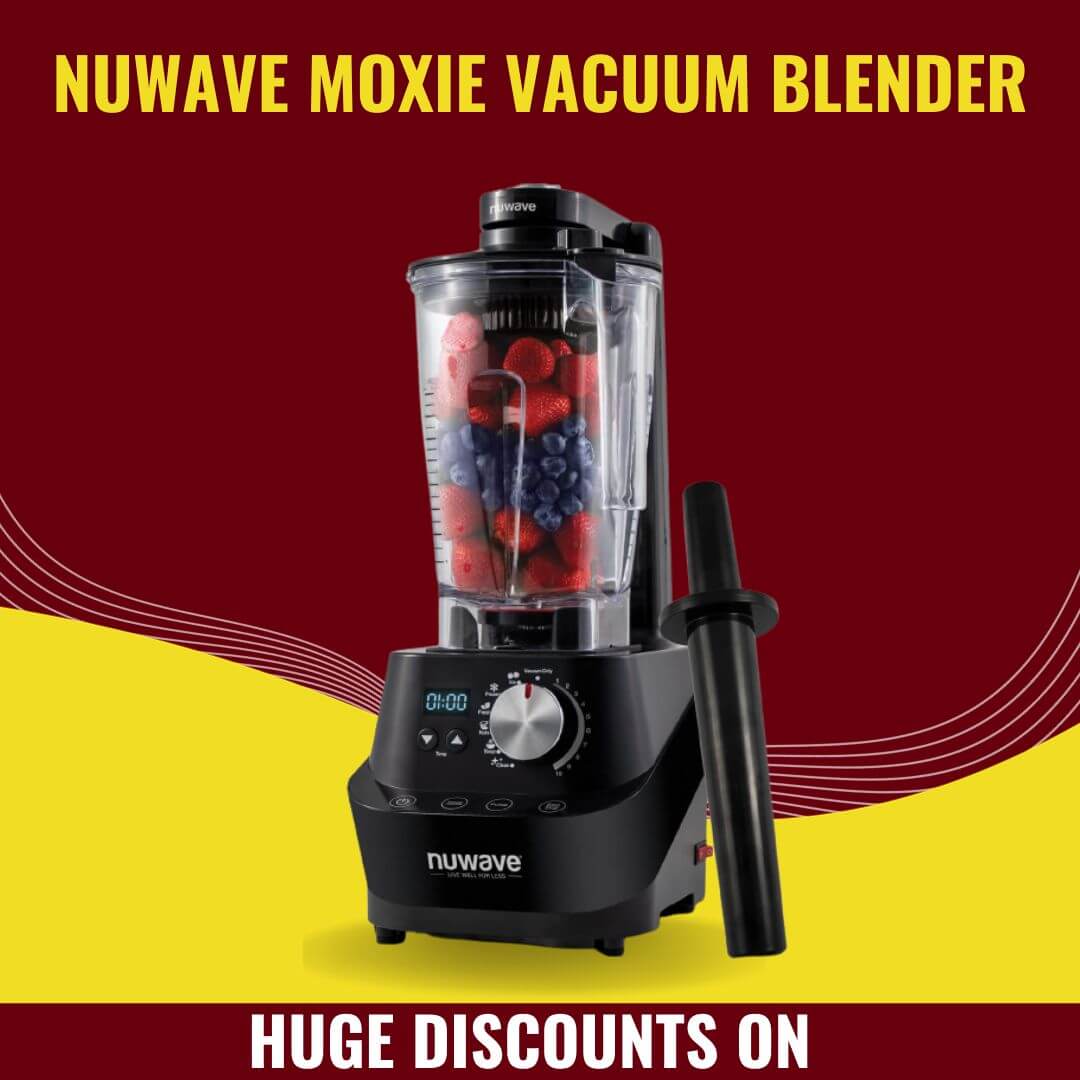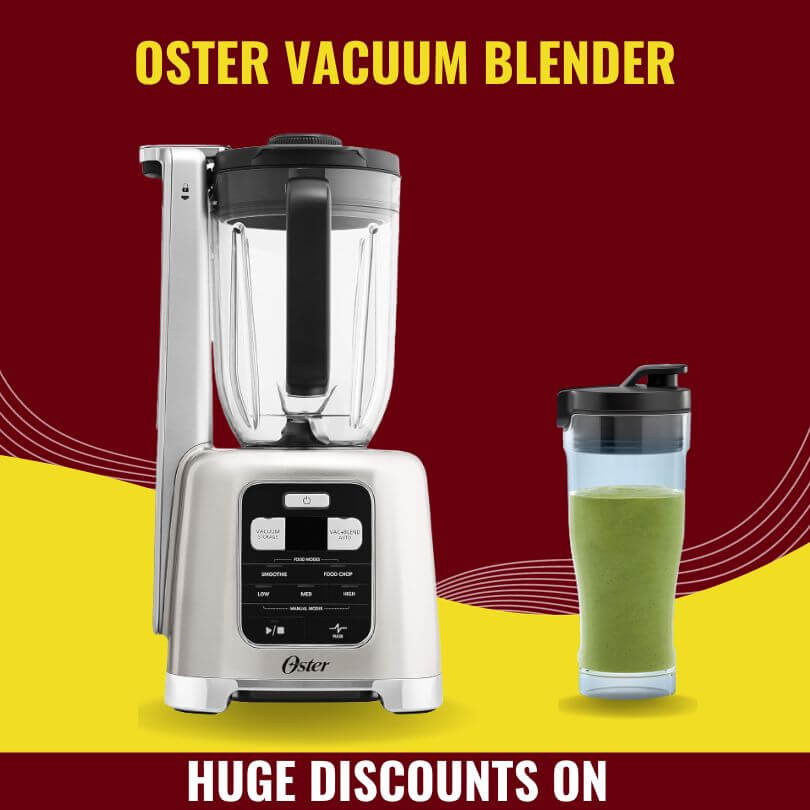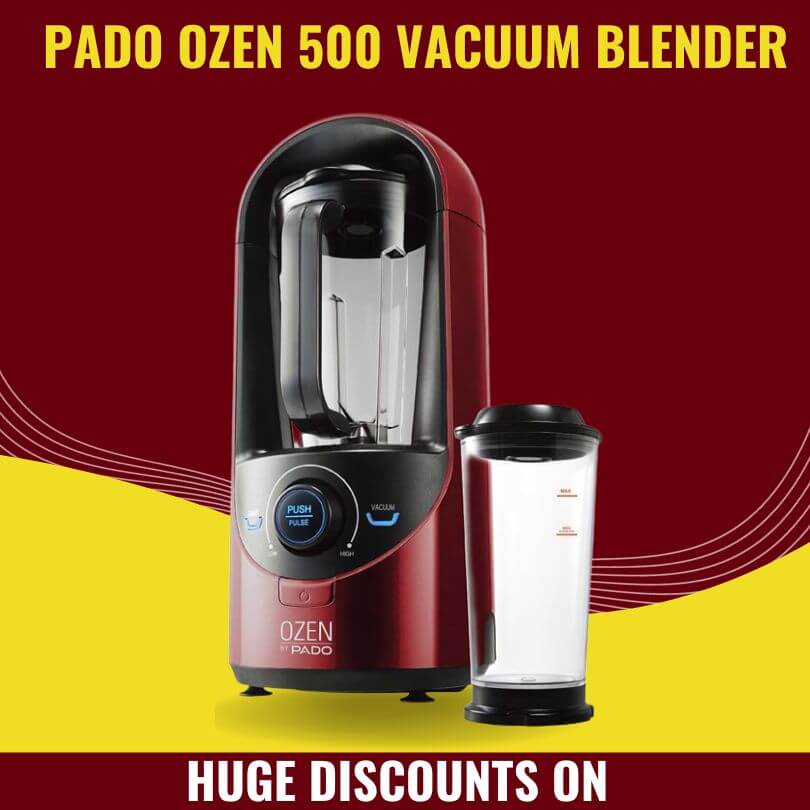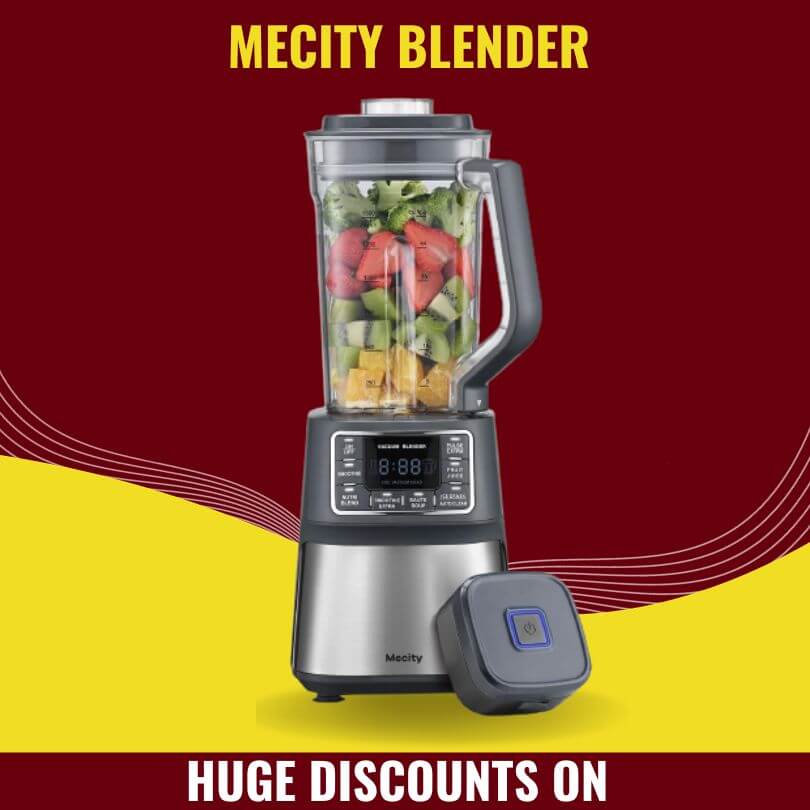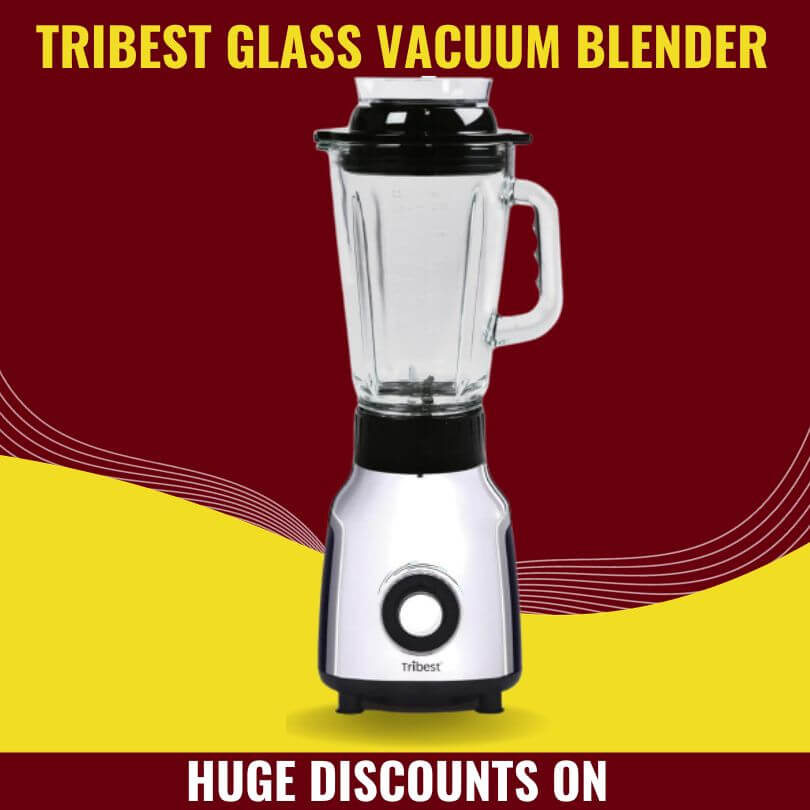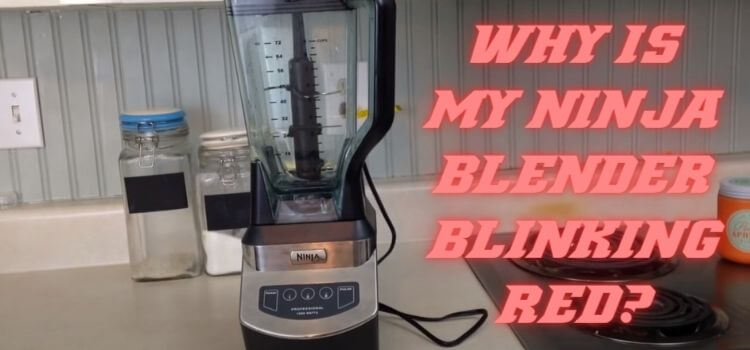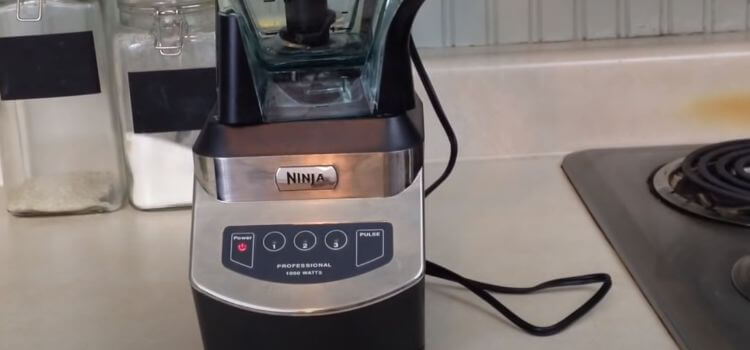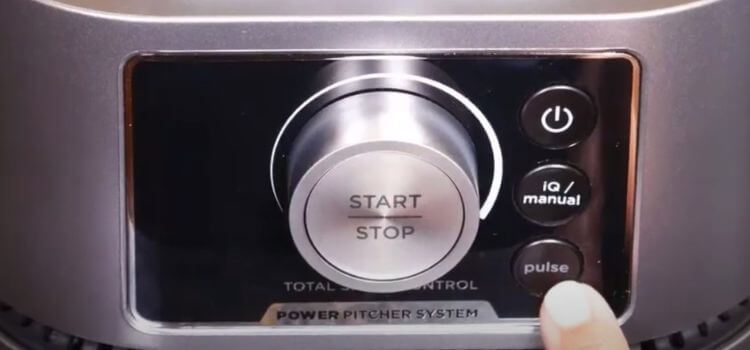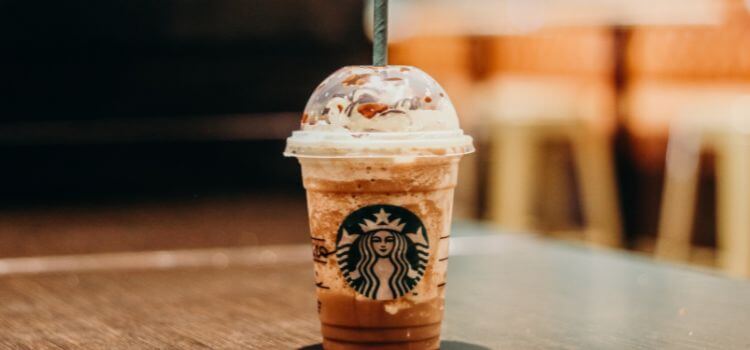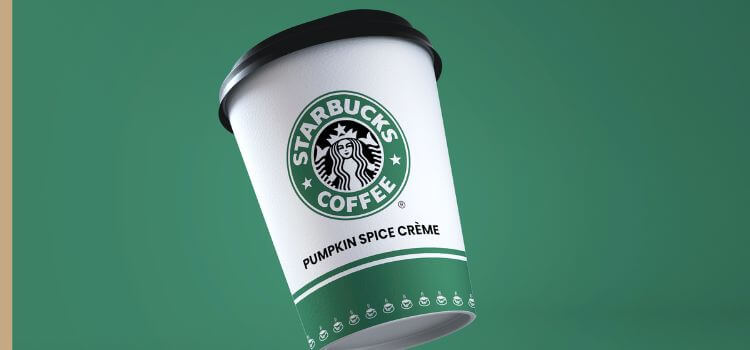Blenders are an essential kitchen appliance that can help you prepare a variety of recipes, from smoothies to soups and sauces. Glass blenders, in particular, are a popular choice for those who prefer a durable and long-lasting option. Glass blenders are not only sturdy but also safer than their plastic counterparts as they do not contain any harmful chemicals that could leach into your food.
When looking for the best glass blender, there are a few crucial factors to consider. The first thing to keep in mind is the capacity of the blender. If you plan on making larger batches of food, you will want a blender with a larger capacity. The power of the blender is also essential, as it determines how well it can handle tough ingredients like ice and frozen fruits. Additionally, the blade quality is critical as it affects how smoothly the blender can blend ingredients.
After researching and testing various glass blenders, we have identified the top options that offer excellent performance and durability. In this article, we will take a closer look at the best glass blenders on the market and what makes them stand out. Whether you are an avid smoothie enthusiast or a home cook looking for a versatile kitchen appliance, we have got you covered.
5 Best Glass Blenders
We have done extensive research and testing to bring you the best glass blenders on the market. A glass blender is a great investment for anyone who wants to blend smoothies, soups, sauces, and more. With a glass blender, you can easily see the contents of your blender and ensure that everything is blending smoothly. In this article, we will be sharing our top picks for the best glass blenders available. Whether you are a professional chef or a home cook, we have a blender that will suit your needs.
Oster Blender | Pro 1200 with Glass Jar
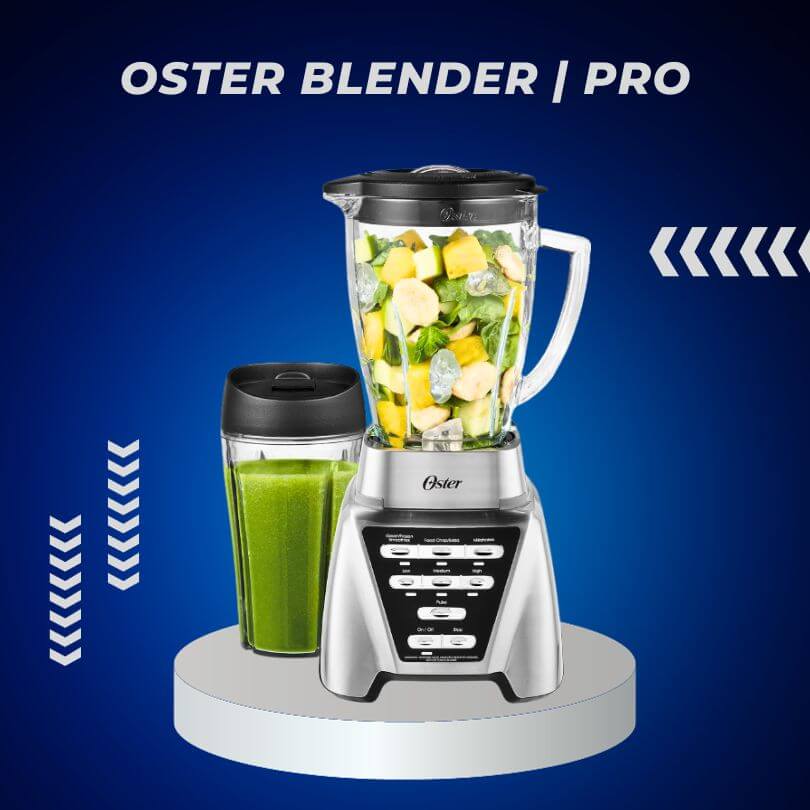
If you’re looking for a reliable and versatile blender that can handle a variety of tasks, the Oster Pro 1200 Blender with Glass Jar is worth considering.
Pros
- The 1200-watt motor and dual-direction blade technology make quick work of blending, chopping, and grinding tasks.
- The 6-cup glass jar is sturdy and dishwasher safe, and the included 24-ounce smoothie cup is a convenient bonus.
- The 10-year Duralast all-metal drive limited warranty provides added peace of mind.
Cons
- The blender is relatively loud, especially when using the higher speed settings.
- The wider base of the glass jar can make it harder to store in some cabinets or on some countertops.
We’ve been using the Oster Pro 1200 Blender for a few months now, and overall, we’re happy with its performance. The motor is powerful enough to handle everything from smoothies to nut butters to crushed ice, and the pre-programmed settings make it easy to get the right consistency for your recipe. We also appreciate the included smoothie cup, which is great for on-the-go breakfasts or snacks.
One thing to keep in mind is that the blender is fairly loud, especially when using the higher speed settings. If you’re sensitive to noise, you may want to look for a quieter model. Additionally, the wider base of the glass jar can make it tricky to store in some cabinets or on some countertops – make sure you measure your space before purchasing.
Finally, while we haven’t experienced any issues ourselves, some users have reported leaks or cracks in the glass jar over time. If you’re concerned about this, you may want to consider a blender with a plastic or metal jar instead.
Overall, we think the Oster Pro 1200 Blender is a solid choice for anyone looking for a versatile and reliable blender at a reasonable price point.
BLACK+DECKER PowerCrush Multi-Function Blender
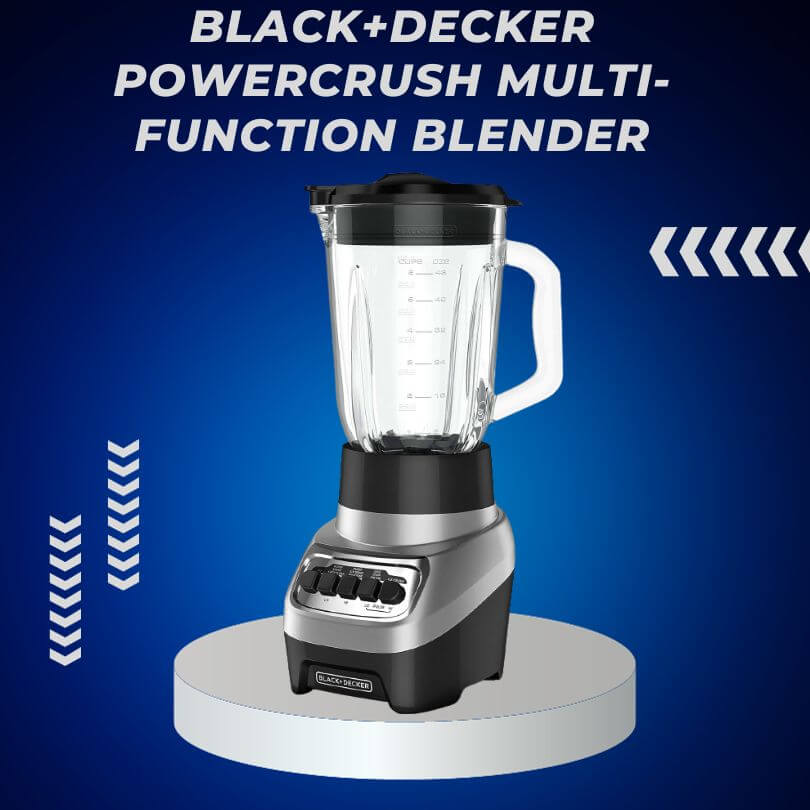
If you’re looking for a reliable blender that can handle a variety of tasks, the BLACK+DECKER PowerCrush Multi-Function Blender might be a good option for you.
Pros
- The 4-tip QuadPro Blade Technology creates a constant flow and vortex that leads ingredients directly to the blades for fast blending performance.
- With four speed functions (low, hi, low pulse, hi pulse), this blender can handle any job with ease from creamy smoothies to icy drinks and more.
- The thick, sturdy 6-cup PerfectPour Glass Jar has a classic feel with advanced performance, and the spout is molded for easy pouring.
Cons
- Some users have reported that this blender is not as powerful as they had hoped, particularly when it comes to crushing ice.
- The base housing is made primarily of plastic, which may not be as durable as other materials.
In our experience, the BLACK+DECKER PowerCrush Multi-Function Blender is a solid choice for anyone who needs a blender that can handle a variety of tasks. The QuadPro Blade Technology and four speed functions make it easy to blend a wide range of ingredients, and the 6-cup glass jar is both sturdy and easy to pour from.
That being said, some users have reported that the blender is not as powerful as they had hoped, particularly when it comes to crushing ice. Additionally, the base housing is primarily made of plastic, which may not be as durable as other materials. Finally, while the blender is advertised as being good for smoothies, some users have found that it takes longer than they would like to blend ingredients to the desired consistency.
Overall, we would recommend the BLACK+DECKER PowerCrush Multi-Function Blender to anyone who needs a reliable blender for a variety of tasks, but it may not be the best choice for those who need a blender that can handle particularly tough jobs or who are looking for a blender that can make smoothies quickly.
Hamilton Beach Power Elite Wave Action blender
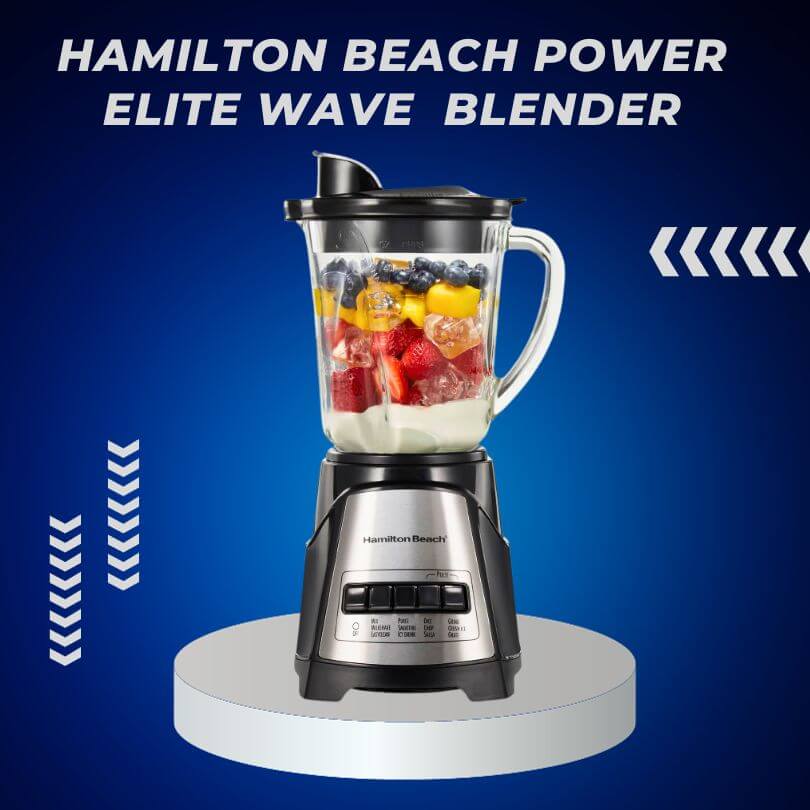
If you are looking for a versatile and powerful blender, the Hamilton Beach Power Elite Wave Action blender is a great choice.
Pros
- With 700 watts of peak blending power and stainless steel Ice Sabre blades, this blender gives you all the power you need to make smoothies, protein shakes, frozen drinks and more.
- The patented Wave Action system ensures ultra-smooth results by continuously forcing ingredients down into the blades and circulating them around the jar, thoroughly crushing even the hardest foods with ease.
- Serving is easy and mess-free thanks to the spout on this electric blender that lets you pour contents into your glass without spills or drips.
Cons
- While the glass jar is dishwasher safe, the base of the blender must be wiped clean with a damp cloth.
- Some users have reported that the blender is noisy during operation.
We recently tried out the Hamilton Beach Power Elite Wave Action blender and were impressed with its performance. The 12 blending functions are controlled by 5 simple buttons on the easy-to-read control panel, making it easy to use even for beginners.
We used the blender to make smoothies, purees, and milkshakes, and were pleased with the results. The patented Wave Action system did an excellent job of thoroughly crushing all the ingredients, resulting in smooth and creamy blends every time. We also appreciated the spout on the jar, which made pouring our drinks easy and mess-free.
While the blender is not as powerful as some higher-end models, we found that it had plenty of power for our needs. However, we did notice that the blender was a bit noisy during operation, which may be a concern for some users.
Overall, we would definitely recommend the Hamilton Beach Power Elite Wave Action blender to anyone in the market for a versatile and affordable blender.
Oster Core 16-Speed Blender with Glass Jar
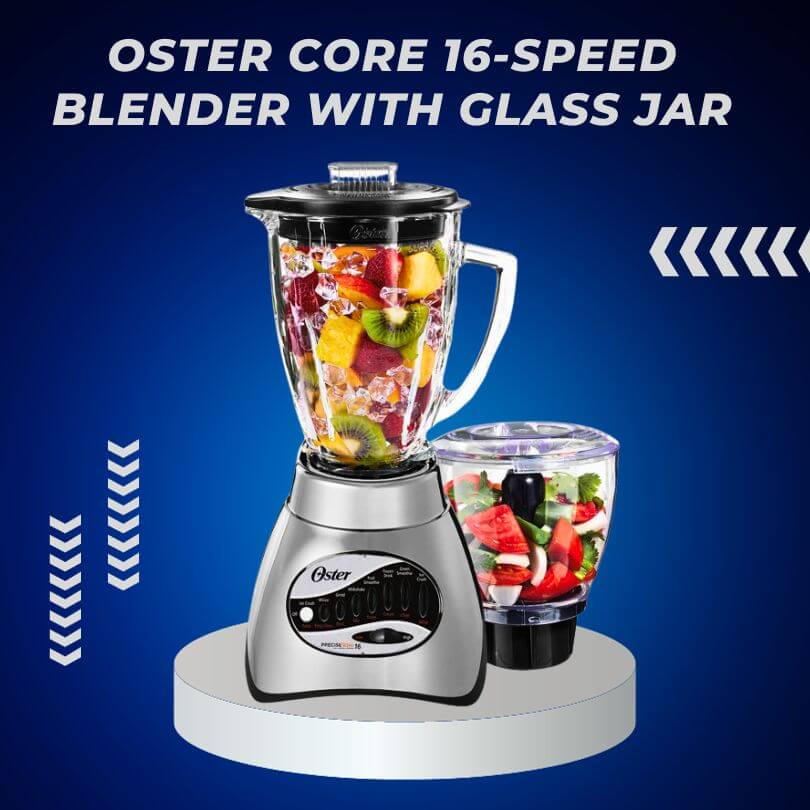
We recommend the Oster Core 16-Speed Blender with Glass Jar for anyone looking for a versatile and powerful blender with a sleek design.
Pros
- The 16 different speeds allow for precise blending and chopping.
- The food processor attachment is a convenient addition for those who want to do more than just blend.
- The counter-worthy design makes this blender a stylish addition to any kitchen.
Cons
- The blender can be quite loud, which may be a drawback for some users.
- The plastic base may not be as durable as a metal one.
This blender is perfect for those who want a powerful and versatile blender that can handle a variety of tasks. The 16 different speeds allow for precise blending and chopping, while the food processor attachment is a convenient addition for those who want to do more than just blend. The counter-worthy design makes this blender a stylish addition to any kitchen.
While the blender can be quite loud, the performance more than makes up for it. The plastic base may not be as durable as a metal one, but it is still sturdy enough to handle regular use. The price point may be a bit high for those on a budget, but the quality of the blender makes it worth the investment.
Overall, the Oster Core 16-Speed Blender with Glass Jar is a great choice for anyone in the market for a powerful and versatile blender with a sleek design.
Hamilton Beach Quiet Blender
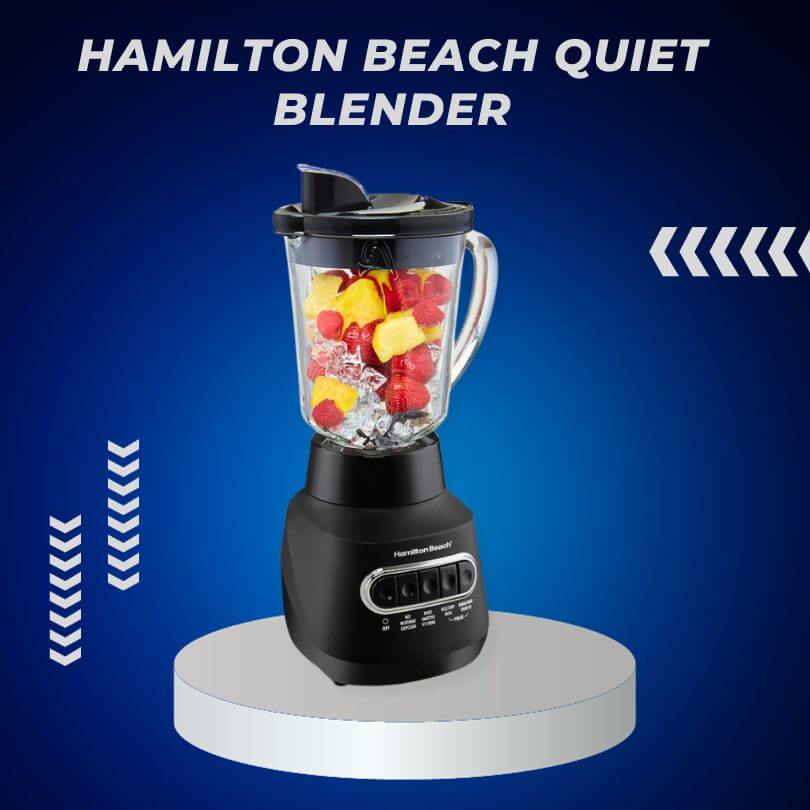
If you want a blender that can crush ice, puree, and blend smoothies without making too much noise, the Hamilton Beach Quiet Blender is a great option.
Pros
- The patented base design makes blending quieter than other blenders.
- The 800-watt motor and intuitive controls allow you to blend a variety of ingredients with ease.
- The Wave Action system ensures ultra-smooth results every time.
Cons
- The blender is not as quiet as advertised.
- The pitcher is smaller than some other blenders on the market.
We were impressed with the Hamilton Beach Quiet Blender’s ability to crush ice and blend smoothies with ease. The patented design makes blending quieter than other blenders, which is great if you don’t want to disturb others in your household. The 800-watt motor and intuitive controls allow you to blend a variety of ingredients with ease, and the Wave Action system ensures ultra-smooth results every time.
However, we did find that the blender is not as quiet as advertised. While it is quieter than some other blenders on the market, it is not silent. Additionally, the pitcher is smaller than some other blenders on the market, which may be a drawback if you want to make larger batches of smoothies or other drinks. Finally, the lid can be difficult to remove and clean, which can be frustrating.
Overall, we would recommend the Hamilton Beach Quiet Blender for anyone who wants a blender that can crush ice, puree, and blend smoothies without making too much noise. It’s a great option for small households or individuals who want to make single servings of drinks or smoothies.
Buying Guide
When it comes to buying the best glass blender, there are several factors you need to consider. Here are some of the things you should keep in mind to help you make an informed decision:
Capacity
The first thing you need to consider is the capacity of the blender. Glass blenders come in different sizes, so you need to choose one that suits your needs. If you plan on making large batches, then you should opt for a blender with a larger capacity. However, if you only need to make small amounts, then a smaller blender will suffice.
Power
The power of the blender is another important factor to consider. The more powerful the blender, the faster and smoother it will blend your ingredients. If you plan on blending tough ingredients like nuts and ice, then you should opt for a blender with a higher wattage. On the other hand, if you only plan on blending soft fruits and vegetables, then a lower wattage blender will suffice.
Speeds
Most glass blenders come with multiple speed settings. The number of speeds you need depends on what you plan on blending. If you plan on blending a variety of ingredients, then you should opt for a blender with multiple speed settings. However, if you only plan on blending one type of ingredient, then a blender with fewer speed settings will suffice.
Blades
The blades of the blender are what do the blending, so they are an important factor to consider. The blades should be made of high-quality materials and be sharp enough to blend your ingredients smoothly. Additionally, the blades should be easy to clean and maintain.
Durability
Finally, you should consider the durability of the blender. Glass blenders are more durable than plastic ones, but you should still opt for one that is made of high-quality materials. Additionally, the blender should come with a warranty to protect you in case of any defects or malfunctions.
In summary, when buying a glass blender, you should consider the capacity, power, speeds, blades, and durability of the blender. By keeping these factors in mind, you can choose a blender that will meet your needs and last for years to come.
Frequently Asked Questions
What are the benefits of using a glass jar blender?
Using a glass jar blender has several benefits. Firstly, glass is a non-reactive material, which means it won’t absorb odors or flavors from the food you blend. Secondly, glass is more durable than plastic and less likely to crack or scratch. Finally, glass is easy to clean and won’t stain or discolor over time.
Which is the best budget glass blender available in the market?
If you’re on a tight budget, the Oster BLSTMG-B glass blender is a great option. It’s affordable, yet still powerful enough to handle most blending tasks. It also comes with a 6-cup glass jar, which is perfect for making smoothies or sauces.
What are the top features to look for in a glass blender for smoothies?
When looking for a glass blender for smoothies, there are a few key features to consider. Firstly, make sure the blender has a powerful motor and sharp blades to ensure a smooth blend. Secondly, look for a blender with a large enough jar to make multiple servings at once. Finally, consider a blender with pre-programmed settings or variable speed options for greater control over the blending process.
Can glass blenders blend everything?
While glass blenders are versatile and can handle a wide range of blending tasks, they may not be suitable for blending hot liquids or hard ingredients like ice or nuts. Always consult the manufacturer’s instructions before attempting to blend anything in your glass blender.
What sets the Ninja BL660 Professional Glass Blender apart from other glass blenders?
The Ninja BL660 Professional Glass Blender stands out from other glass blenders due to its powerful motor and unique blade design. It also comes with a range of pre-programmed settings and variable speed options, making it a versatile and user-friendly blender.
Is a glass blender better than a plastic blender?
While both glass and plastic blenders have their advantages and disadvantages, glass blenders are generally considered to be more durable and easier to clean. They also don’t absorb odors or flavors like plastic blenders can. However, plastic blenders are often more affordable and lightweight, making them a good option for those on a budget or who need a portable blender.
